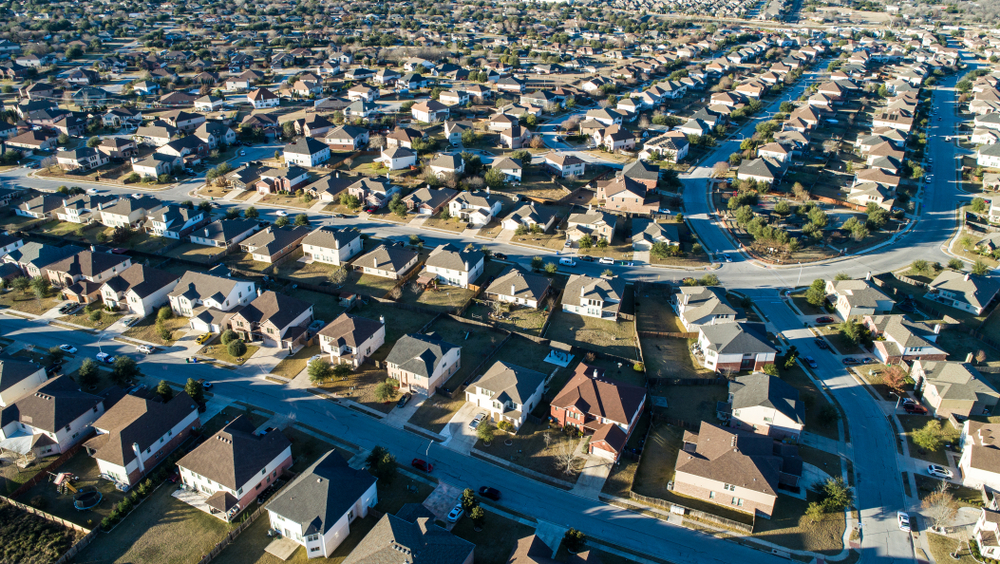
In this surburban setting of multiple homes and rooftops, we see many dwellings of a similar (although not identical) age and styling, but we have no idea from the outside what the needs might be of those inside.
There are no aging in place neighborhoods
While we like to think of aging in place as a strategy for creating viable living environments for everyone and anyone, these techniques are specific to individuals and their needs. Therefore, aging in place neighborhoods, subdivisions, communities, cities, or any other type of collection of housing – as much as we might think they would be desirable to have – simply don’t exist. They can’t by definition.
Aging in place means that someone can remain in their individual, personal home for the rest of their lives and that it can adapt to their needs over time as they see fit. Treatments and strategies are done for each household or individual within that living space.
While there may be some similar approaches to creating safe and effective living environments for given housing styles or neighborhoods, each design treatment is necessarily based on the individual and can vary widely from home to home – even within the same home.
Aging in place is personal
While many communities may have accessible sidewalks, pathways, recreational areas, covered structures such as pavilions, and public buildings with barrier-free entries, these all exist outside the home. As such, they are great accessibility features that have nothing to do with aging in place except to accommodate the elderly and disabled individuals living in proximity to them.
Accessible, safe, and functional dwellings are a great overarching objective to strive for, but we have no mandate to do so. It all depends on the individual occupant of each living space. Some will want us to help them create a more effective flor plan for themselves, and some will not. Some will need more work than others. Some will consent to do just a little at a time rather than a more comprehensive project.
Regardless of how much we might want to help someone, and notwithstanding how much someone might be able to benefit from what we have to offer, it still comes down to the individual homeowner desiring to make the improvements in their home.
Age of the home is not a factor
Brand new communities with homes currently under construction or recently completed do not come with any assurance that the occupants can use them effectively because those homes – unless they are custom built just for that specific homeowner – are built to showcase what the marketplace is interested in purchasing.
SImilarly, hundred-year-old homes may suffice quite well for the needs of their occupants. They might benefit from some physical or technology updates, but as far as layout and generally allowing the safe use of the space, they work.
It’s not the age of the home in itself that is the issue with aging in place, although this can be a major consideration. It comes down to the needs and abilities of the individual in the living space – and there may be more than one treatment or consideration that is necessary to accommodate everyone in the dwelling.
